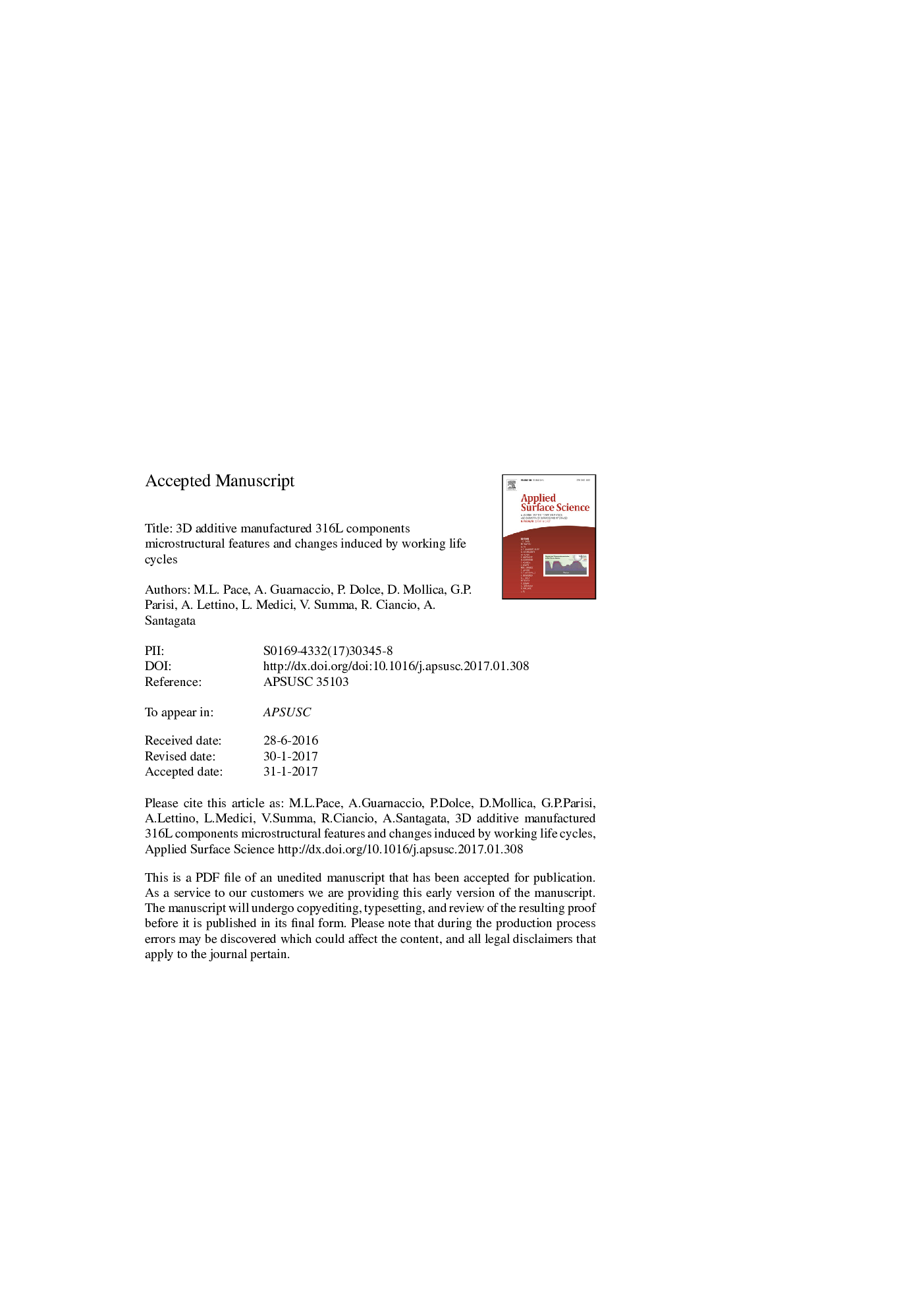| Article ID | Journal | Published Year | Pages | File Type |
|---|---|---|---|---|
| 5346972 | Applied Surface Science | 2017 | 28 Pages |
Abstract
The ability of processing through laser beams different kinds of metallic powders for direct production of 3D components with complex geometries has been gaining an impressive and growing attention for specific industrial applications. The process which can be distinguished as Selective Laser Sintering or Selective Laser Melting is even considered, more generally, as Additive Manufacturing where layer by layer material is built by the interaction between a laser beam and a powder bed. The rapid heating of the powder due to the laser beam energy transfer process followed by a rapid cooling rate induces within the manufactured material a cellular structure with fine sub-grains, which are in the range of few hundreds of micrometers. These metastable structures, which are smaller than the grain size in conventionally manufactured 316L stainless steel components, can undertake towards a recrystallization process due to either heat or mechanical treatments. For instance, when sub-grain boundaries of the cells are enriched with Mo and higher concentration of dislocation, dynamical processes occur generating local residual stresses. In these circumstances the segregation of Mo in cell boundaries is out of thermodynamic equilibrium conditions so that microstructures and phases are metastable. In the range of 1100-1400 °C heat treatments a complete dissolution of Mo in the Fe matrix with a gradual disappearance of sub-microns cell is observed feeding the growth of larger austenitic sub-grains formation. It follows a higher degree of Mo dissolution in the material matrix and a decrease of dislocation's concentration (Saeidi et al., 2015) [1]. In the work here presented we point out which are the microstructural features of stainless steel 316L components realized by Additive Manufacturing. Furthermore, the occurrence of a microstructural evolution is presented after experiencing to fatigue of 80000 cycles some door joints obtained by this technique. A decrease of dislocation's number, an increase of twinning due to the growth of grains and to the release of local stresses can be hypothesized following that an important role could be played by the presence of dislocations in cell boundaries as well as oxides nano-inclusion formed in-situ during the Additive Manufacturing process (Saeidi et al., 2015) [2]. From these outcomes it is going to be presented how the 3D components produced by Additive Manufacturing could change and improve their features for potential industrial applications during life cycles and enhance such a behavior by taking carefully into account the laser parameters and its scanning speed.
Related Topics
Physical Sciences and Engineering
Chemistry
Physical and Theoretical Chemistry
Authors
M.L. Pace, A. Guarnaccio, P. Dolce, D. Mollica, G.P. Parisi, A. Lettino, L. Medici, V. Summa, R. Ciancio, A. Santagata,
